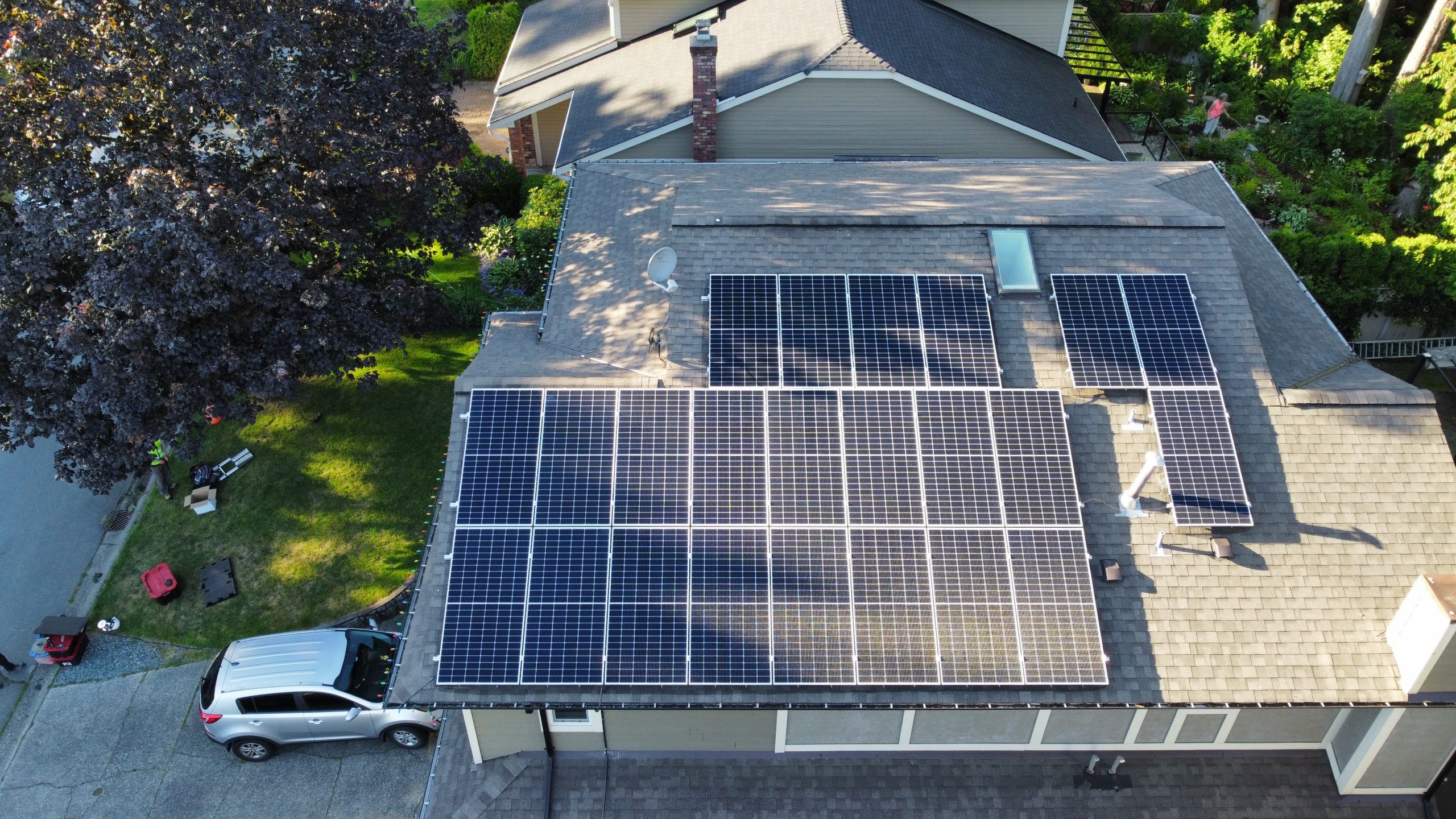How Solar Panel Efficiency Works
Anyone looking into installing solar panels has probably seen the word efficiency thrown around a bunch of times. Most available panels on the market range between 11-23% efficiency, but what exactly does that mean?
At first glance, those numbers might seem rather low. However, with the right roof and design, a solar system can completely offset your electricity usage needs and pay back your initial investment in no time.
So, you’re probably wondering if picking the panel with the highest efficiency is the best choice. It’s natural to assume higher efficiency automatically entails better production but is the extra always worth it?
We’ll help answer all your efficiency-related questions and let you know what to look for so you can make the most out of your solar system.
What is Solar Efficiency?
Solar efficiency is a measurement of how much sunlight your panels can absorb. Solar cells aren’t able to take in every wavelength from the solar spectrum, and the light that your panels can’t use is either reflected back or lost.
Panel efficiency is steadily increasing, and technology is always getting better. Researchers worldwide have pushed efficiency up to 40% in laboratory settings. Although the real-life applications are different, we believe higher-performing panels will keep popping up on the market in the years to come.
What Affects Your Solar Panel Efficiency?
Type of Panel Material
The type of silicon your panels have affects the overall efficiency. Monocrystalline (black solar panels) are currently the most efficient and work exceptionally well under low-light conditions.
Temperature:
There’s a misconception that solar panels work better in hotter climates, but they’re actually most effective in cooler temperatures. Anything above 25 degrees Celsius can slow down your panel’s efficiency.
Roof Angle and Orientation
Your roof is a huge part of determining how efficient your solar panels can be. The general rule is to look for a south-facing roof angled at about 30 to 45 degrees. If you want to learn more about how roofs can impact your solar production, check out our blog for more information.
Shade and Obstructions
Any type of shade can severely impact efficiency since light is being blocked from reaching your solar panels. If you have any trees or buildings nearby casting shade on your roof, your installer should work around those areas when designing your system.
How to Find the Best Solar Panels for Your Project
With a decade of experience in the solar industry, here’s what we personally recommend when looking for the best solar panels for your system.
If you’re in Canada, you’ll need monocrystalline panels to get the most efficiency from a colder climate with variable weather conditions. Monocrystalline panels with PREC technology are highly renowned for providing the best low-light performance.
So obviously, efficiency matters, but is it the most important aspect of your solar search? What we should really be looking at is the wattage of your solar panels. This establishes optimal performance under the best conditions. Wattage typically depends on the physical panel size and efficiency. If you have a 400 watt panel, that’s the maximum amount of power your panels can produce regardless of efficiency.
Ok, so bigger panels with high efficiency mean more wattage, right? Maximizing your power output with larger solar panels might not always be the best route. Although bigger panels usually come with more wattage, you also lose the flexibility of working around more parts of your roof. Finding a smaller panel with a good wattage-to-size ratio can help installers take full advantage of your available roof space, giving you more overall production.
Price is also a big deciding factor for anyone researching solar panels. Sometimes the absolute highest performing panels come with a very steep price tag to match. Losing out on some efficiency might be more financially beneficial for your investment. At the end of the day, as long as the system can cover your household’s electricity usage needs at a good price, the higher number won’t matter as much.
The last but arguably most crucial part to consider is your warranty. Most solar panels come with 25-year performance warranties. Panels are bound to lose a little bit of power output per year, so make sure you know what the degradation rate is for your solar panel’s warranty. Each year’s average degradation rate is around 0.5%, with about 2% in the first year. Paying a little less not is not worth the headache of trying to replace multiple underperforming panels without a warranty.
Choose Polaron for the Best Solar Panels
At Polaron, we only use tier-1 products from reputable brands, such as Longi and Canadian solar, with years of experience in the industry. Both companies have been around for decades and are leaders in manufacturing high-performing monocrystalline panels.
Take advantage of our quality equipment and award-winning Sunline program with interest as low as 0%. Contact us today, and we’ll design your perfect solar system and hook you up with a free quote from one of our solar specialists.

